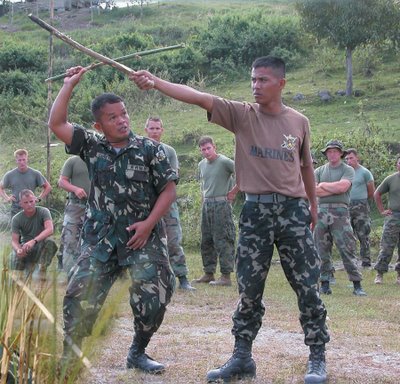In Jim Wagner's RealFighting.com article: "Filipino Kali is alive and well," attests to the fact that the Filipino stick and knife arts are now integrated into the military and police training curricula, and can no longer be considered "dying."
... Another major event that occurred in the 90’s (which went virtually unnoticed by the civilian martial arts world) was the integration of Filipino based martial arts as part of official US military training and law enforcement training. This includes corrections, probation, pre-trial services, and diplomatic protection services.
Within the military you will find dedicated martial artists (learning it first as civilians or picking it up through their training). These practitioners usually find their way into training positions and insert their skills into the curriculum whenever possible, while still adhering to established procedures. Thus, it stands to reason that the Filipino martial arts have also found their way into the military just as the Japanese and Korean arts had in the 50’s and 60’s.
Today you don’t need to look very far to see the influence of the Filipino martial arts has had on the United States military. If you pick up the United States Marine Corps field manual Close Combat (MCRP 3-02B), dated February 18, 1999, you will find strikes and blocks (Chapter 3 Hand-Held weapons) that are identical to what you’d find in a typical kali class. The manual contains step-by-step moves for knives, and even sticks (a section titled Combative Stick Techniques).
I concur with this. The law enforcement ASP curriculum, as well as the field manuals mentioned definitely derive their stick and some knife technique from Filipino martial arts. Read it all.


No comments:
Post a Comment